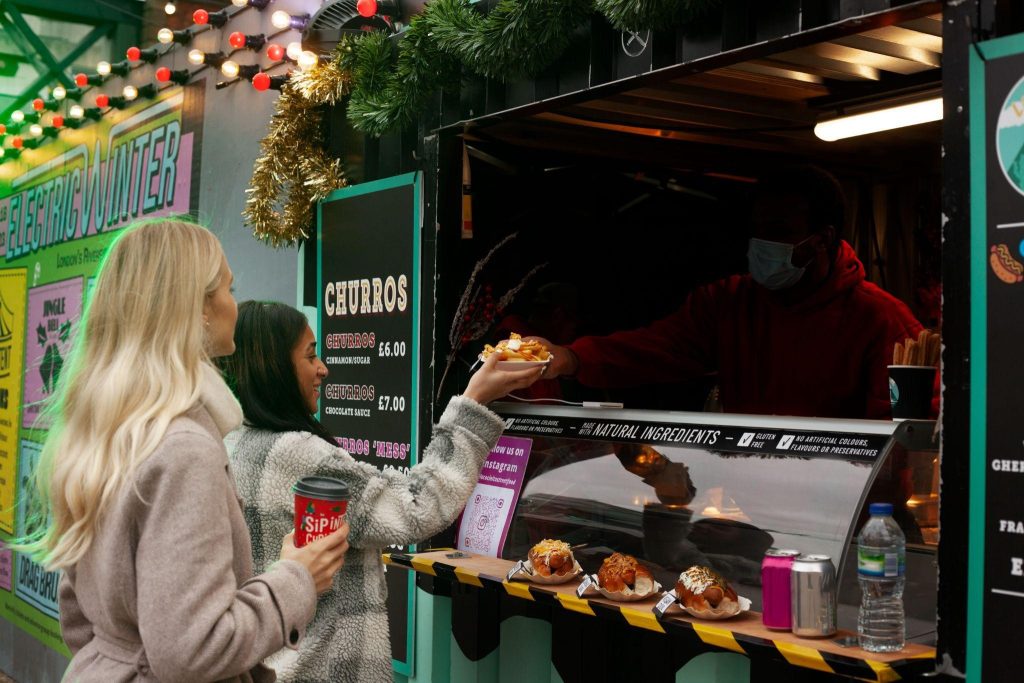The fast-casual dining sector thrives on a delicate balance: quality ingredients and a more refined atmosphere than traditional fast food, delivered quickly and conveniently. In this competitive landscape, restaurant kiosks have emerged as a trendy gadget and a strategic weapon helping these chains truly excel. From streamlining queues to boosting order values, let’s explore how restaurant kiosks are a game-changer for fast-casual success.
Think about your typical experience at a popular fast-casual spot. Often, there’s a queue snaking towards the counter. Customers make on-the-spot decisions, sometimes feel rushed, and staff work hard to keep up. Now, picture this same scene with the introduction of sleek restaurant kiosks. Suddenly, the dynamic shifts.
Customers can browse digital menus at their own pace, customize their orders precisely, and pay seamlessly, all before a staff member needs to intervene. This fundamental shift in the ordering process is at the heart of why restaurant kiosks are proving to be such a powerful tool for fast-casual chains.
The Rise of Fast Casual & Digital Convenience
Over the past decade, fast-casual dining has become very popular. People prefer having good quality fast food that doesn’t sacrifice the experience of traditional fast food. It makes sense that these chains are also pioneering new technology, as seen in their ever-increasing use of technology.
This model perfectly suits the use of restaurant kiosks. The speed, customisation, and efficiency of kiosks make them perfect for fast-casual dining.
Accurate Ordering and Better Personalisation
With restaurant kiosks, the customer takes over by being given a touch screen. There are no longer any mistakes with orders or problems choosing what to buy quickly. Pressing a button on the screen, diners can check the menu, change their order, read about allergens, and see additional suggestions.
Tillster found that using self-order kiosks can make customers spend about 30% more than using the counter. Why? Entering a kiosk allows you to choose upgrades comfortably, without anyone else watching. Deciding to add more cheese or get sweet potato fries carries no guilt, and it gets restaurants more money at the same time.
Fewer People in Line, More Smiles
Quicker-service restaurants must be fast, since customers will likely get impatient. With restaurant kiosks, people no longer have to wait in line as they can order simultaneously. You won’t experience long bottlenecks in your service line.
In addition, kiosks never need a break and keep going the whole time. You won’t hear excuses; they always tell you what’s new. A regular working schedule improves customer satisfaction, allowing teams to work on orders more efficiently.
In fact, both Leon and KFC have noted that kiosks shorten people’s waiting times during peak hours, promoting quicker table turnover and larger profits.
Making Choices Based on Real-time Data
Restaurant kiosks are often appreciated for the massive amount of data they can collect. Every action we take with our data gives us a reason to remember. What types of foods are the favourites for lunch and dinner? People on the West Coast are choosing more plant-based menu items, but the same is not seen in Auckland, New Zealand.
The information helps make better decisions, such as planning menus, hiring employees, and checking supply levels. They can meet current demands, create new menu items for people to try online, and promote deals as they please. It’s much like having your own marketing team at the sales counter.
How Much You Can Do Without Cutting Labour Costs
Many believe kiosks could replace human staff, but the reality is much more balanced. Kiosks in restaurants enhance customers’ interactions with employees. Since ordering is done at the kiosk, the team can focus on making meals, assisting customers, and creating a great environment.
As it becomes more costly to hire workers, kiosks make it straightforward to run services across many locations.
Increasing Loyalty with Each Ad Showing
A kiosk can be a place where customers can interact and form loyal relationships regularly. When apps, rewards schemes, and CRM systems are added to a kiosk, it can recall each customer’s name, present them with an appropriate suggestion, or promote a relevant offer.
The personal touch allows fast-casual brands to effectively connect with many customers. If a kiosk remembers your favourites and awards you a free coffee after you visit 10 times, that’s where we’re heading.
The Kiosk Effect: Why Fast Casual Was First to Adapt
1. The Perfect Storm of Factors
Fast casual chains were uniquely positioned to capitalise on kiosk technology because:
- Tech-savvy customer base: 68% of fast casual diners prefer digital ordering (Deloitte Digital 2024)
- Simplified menus: Easier to digitise than full-service restaurants
- Existing tech infrastructure: Most already had POS systems ready for integration
2. The Upselling Goldmine
Kiosks remove the human awkwardness from suggestive selling:
- Strategic placement: Add-ons appear exactly when decision fatigue sets in
- Visual temptation: High-res images of melting cheese and crispy bacon
- Social proof: “Most popular” tags create FOMO.
Concluding Remarks:
As we move into 2025, expect to see even more sophisticated restaurant kiosks with AI-powered personalisation and more seamless integration with the overall dining experience.
For fast-casual chains looking to stay ahead of the curve, restaurant kiosks are proving to be less of a novelty and more of a fundamental ingredient for success. They offer a recipe for faster service, happier customers, and a more efficient operation – a winning combination in the competitive world of fast-casual dining.
